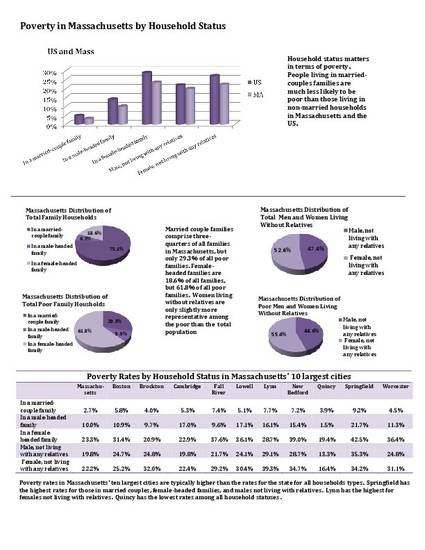
Other
Poverty in Massachusetts by Household Status
Center for Social Policy Publications
Document Type
Fact Sheet
Publication Date
5-1-2011
Disciplines
Abstract
Household status matters in terms of poverty. People living in married-couples families are much less likely to be poor than those living in non-married households in Massachusetts and the US.
Poverty rates in Massachusetts’ ten largest cities are typically higher than the rates for the state for all households types. Springfield has the highest rates for those in married couples, female-headed families, and males not living with relatives. Lynn has the highest for females not living with relatives. Quincy has the lowest rates among all household statuses.
Community Engaged/Serving
No, this is not community-engaged.
Citation Information
Randy Albelda, Ferry Cadet and Dinghong Mei. "Poverty in Massachusetts by Household Status" (2011) Available at: http://works.bepress.com/randy_albelda/16/

Who is poor in Massachusetts? How does the Commonwealth fare compared to the US in terms of poverty rates? Which Massachusetts cities have the lowest and highest poverty rates? Researchers at the Center for Social Policy have created eight one-page fact sheets on poverty in the Massachusetts using the recently released 5-year sample of the American Community Survey. Each of the one-page fact sheets provides information of poverty among a particular demographic groups (age, gender, race/ethnicity, education level, nativity, and family status), comparing Massachusetts rates to that in the US, providing the distribution of the whole population and the total poor population, and comparing poverty rate in the 10 largest Massachusetts cities.